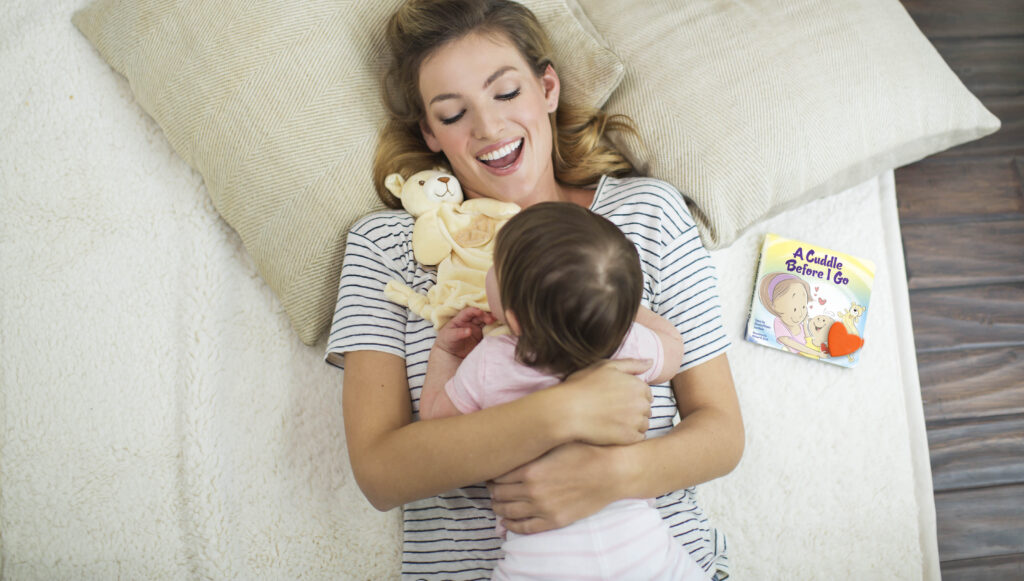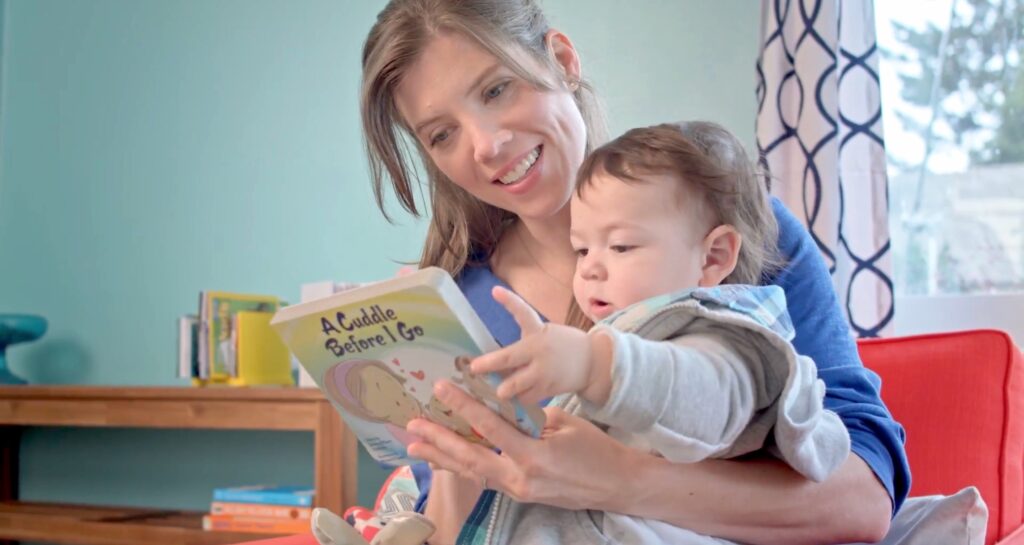Speaking in Parentese

The Art (and Science) of Parent Talk “The world talks to the mind. Parents speak more intimately—they talk to the heart.” – HAIM GINOTT

The Art (and Science) of Parent Talk “The world talks to the mind. Parents speak more intimately—they talk to the heart.” – HAIM GINOTT

National Scientific Council on the Developing Child. (2007). The timing and quality of early experiences combine to shapebrain architecture: Working paper #5. Retrieved from http://developingchild.harvard.edu/wpcontent/uploads/2007/05/Timing_Quality_Early_Experiences-1.pdf

• Take your child for a walk. Share the experience together by using all of your senses and pointing out the smells of the flowers, the feel of the wind, the sounds of birds, and the beautiful colors of nature. Each time your child uses one of his five senses, a neural connection is made […]

• Being fully engaged with your child is paramount. Use your Eyes and Ears to help you stay focused—look, listen, and respond to your child. • When you engage with your child, put away technology and try to resist multitasking. • Clear your mind of other thoughts and feelings so you can be present with […]

Children cherish undivided attention. When you give your child your full attention, you are letting him know he is important to you. Your undivided attention strengthens your relationship, increases your child’s self-esteem, and helps you understand him better. Still, with busy schedules and our modern, plugged-in lifestyles, giving our undivided attention has become rare. Revive […]

Use Your Eyes and Ears “This time, like all times, is a very good one, if we but know what to do with it.” – RALPH WALDO EMERSON

Bowlby, J. (1969). Attachment and loss: Volume 1. New York, NY: Basic Books. Cohen, L. J. (2002). Playful parenting. New York, NY: Ballantine Books. Feldman, R. (2012, June 14). Bio-behavioral synchrony: A model for integrating biological and microsocial behavioral processes in the study of parenting. Parenting: Science and practice, 12(2-3). Gold, C. M. (2011). Keeping […]

An easy way to practice synchrony with your child is through turn-taking activities. It’s easy. Here are some ideas: • Reflect back. When you are interacting with your child, respond to her action with your own action that reflects her inner feelings. For instance, if she widens her eyes and smiles at you after you […]

• Your child’s first language is touch. It is through nurturing, affectionate touch that your child feels soothed, protected, and loved. You communicate volumes in how you hold and handle your child—and the power of touch continues as your child grows. • Remember that when you gaze into your child’s eyes, you are promoting the […]

Synchrony is the process through which the parent’s physical and mental systems become coordinated with those of the infant. It is like learning to dance with your child. In the beginning, the parent adapts to the infant’s states through repeated closely matched exchanges that include affectionate touch, eye contact, special words, songs, and vocalizations, as […]
| Cookie | Duration | Description |
|---|---|---|
| __stripe_mid | 1 year | Stripe sets this cookie cookie to process payments. |
| __stripe_sid | 30 minutes | Stripe sets this cookie cookie to process payments. |
| cookielawinfo-checkbox-advertisement | 1 year | Set by the GDPR Cookie Consent plugin, this cookie is used to record the user consent for the cookies in the "Advertisement" category . |
| cookielawinfo-checkbox-analytics | 11 months | This cookie is set by GDPR Cookie Consent plugin. The cookie is used to store the user consent for the cookies in the category "Analytics". |
| cookielawinfo-checkbox-functional | 11 months | The cookie is set by GDPR cookie consent to record the user consent for the cookies in the category "Functional". |
| cookielawinfo-checkbox-necessary | 11 months | This cookie is set by GDPR Cookie Consent plugin. The cookies is used to store the user consent for the cookies in the category "Necessary". |
| cookielawinfo-checkbox-others | 11 months | This cookie is set by GDPR Cookie Consent plugin. The cookie is used to store the user consent for the cookies in the category "Other. |
| cookielawinfo-checkbox-performance | 11 months | This cookie is set by GDPR Cookie Consent plugin. The cookie is used to store the user consent for the cookies in the category "Performance". |
| CookieLawInfoConsent | 1 year | Records the default button state of the corresponding category & the status of CCPA. It works only in coordination with the primary cookie. |
| elementor | never | This cookie is used by the website's WordPress theme. It allows the website owner to implement or change the website's content in real-time. |
| viewed_cookie_policy | 11 months | The cookie is set by the GDPR Cookie Consent plugin and is used to store whether or not user has consented to the use of cookies. It does not store any personal data. |
| Cookie | Duration | Description |
|---|---|---|
| mailchimp_landing_site | 1 month | The cookie is set by MailChimp to record which page the user first visited. |
| Cookie | Duration | Description |
|---|---|---|
| _ga | 2 years | The _ga cookie, installed by Google Analytics, calculates visitor, session and campaign data and also keeps track of site usage for the site's analytics report. The cookie stores information anonymously and assigns a randomly generated number to recognize unique visitors. |
| _gat_gtag_UA_46801669_2 | 1 minute | Set by Google to distinguish users. |
| _gid | 1 day | Installed by Google Analytics, _gid cookie stores information on how visitors use a website, while also creating an analytics report of the website's performance. Some of the data that are collected include the number of visitors, their source, and the pages they visit anonymously. |
| tk_lr | 1 year | The tk_lr is a referral cookie set by the JetPack plugin on sites using WooCommerce, which analyzes referrer behaviour for Jetpack. |
| tk_or | 5 years | The tk_or is a referral cookie set by the JetPack plugin on sites using WooCommerce, which analyzes referrer behaviour for Jetpack. |
| tk_r3d | 3 days | JetPack installs this cookie to collect internal metrics for user activity and in turn improve user experience. |
| tk_tc | session | JetPack sets this cookie to record details on how user's use the website. |
| Cookie | Duration | Description |
|---|---|---|
| cookies.js | session | No description available. |
| m | 2 years | No description available. |